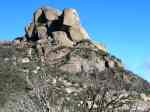Waves of Visitors
The
township of Bright is 350 km NE of Melbourne, near the foothills of the Victorian Alps, on the banks of the Ovens River and Morse's
Creek.
The area of the sub-alpine valleys and the surrounding high plains
has always experienced waves of visitors though they have not always come to the area to ‘holiday’. Having
said this, the original aboriginal inhabitants of northeast Victoria journeyed on foot to their summer “vacation”
on the high plains and enjoyed a feast of Bogong Moths, a traditional edible delicacy.
Sadly, aboriginals were killed and forced out of the area when settlers moved in after the exploration of Hume and Hovell
in 1824. Much of the land was cleared to make way for stock grazing. Mutton and particularly beef became the local
fare and horse and buggy were the means of transport.
High Country beef came into existence in the middle of the 19th century after much of the valley grazing land was incinerated
by bushfire. Local cattlemen discovered the high plains plentiful with summer feed for their cattle.
Gold Fever
The early 1850s brought in the next wave of visitors from other Australian goldfields and also international seekers
came from China, America and Europe. Alluvial gold washed out of the river gravel and was taken first from the Buckland
Valley with many other finds along the Ovens River to Harrietville and its tributaries such as Morse’s Creek to Wandiligong.
This was followed by reef mining where shafts were dug and tunnels followed the quartz rock underground. Dredging followed.
Forestry
The first pine plantation came to the area during the First World War to utilize the dredge tailings and to combat
the spread of the weed St John’s Wort. The degraded areas also later became the home of the forever spreading
blackberry.
Railway
The new railway line to Bright that was completed in 1890 opened up the area further for the movement of produce and people.
Mt Buffalo, Bright and the High Plains were even more accessible.
Agriculture
After both world wars immigrants, particularly the Italians,
came to the Ovens Valley and brought with them their skills in many areas – particularly tobacco growing.
The industry flourished until 2006 but tobacco is no longer grown in the area. By 2006 many of the smaller farms,
plus other fertile areas have been converted to growing a variety of horticultural produce including nuts, apples, wine grapes,
berries, asparagus, peppermint, lavender, etc. The region now has a reputation for fine produce that takes advantage
of the fantastic soil and ideal climate.
Recent
Recent developments have meant that cattle have been been prohibited
from entering the High Country. The issue is political and still under debate. The railway line has been pulled
up and the track converted to the Murray to Mountains Rail Trail, which is sealed from Bright to Bowser, 5km north of Wangaratta,
and also from Everton to Beechworth. Today forestry is still a significant industry in the area, together with the horticulture
industry. However, tourism is now predominant in the Bright area. Fabulous scenery, easy access, loads of festivals
and attractions mean lots of people just like you come to enjoy the beauty and entertainment that is Bright.

